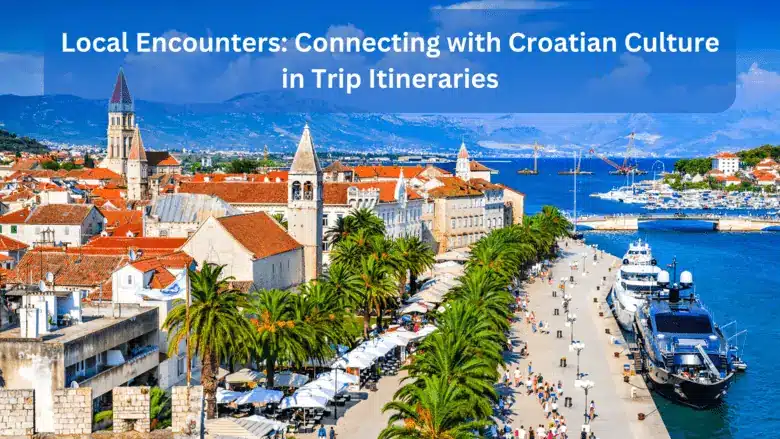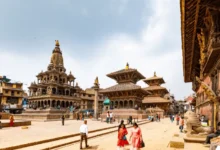Local Encounters: Connecting with Croatian Culture in Trip Itineraries

Croatia is a rich treasure trove of culture and history. These places serve as lures for tourists to visit. This coastal city in Europe is known for its beautiful beaches and rich history. Over 1 million tourists visit it annually. Visitors can explore the ancient coastal walls or visit the national park’s waterfalls. Croatia indeed offers an exciting destination.
Here are some tips for having a local experience in Croatia that you can include in your travel plans.
Introduction to Croatian Cultural Immersion
Croatian culture is heavily influenced by its history. It shows the past of being colonized and also the struggle for independence in 168 BC. This is a fantastic way to comprehend and value Croatian practices, ceremonies, and individuals. Tracing the journey through history over the ages. This topic is crucial for tourists to understand.
I’m eagerly looking forward to exploring Croatia’s ancient landmarks during my trip.
Croatia’s Historical Landmarks and Their Cultural Significance
Indeed, the walls of Dubrovnik have endured for centuries. The structures in Croatia, despite serving as protection, also depict the country’s stormy past. Among your Croatia trip itineraries, roam around the old buildings and be amazed by the relics of history. Remember to keep in mind the essence of Croatia while performing the task. In my view, the country’s beauty reflects the essence of its people.
| Landmark | Cultural Significance |
| Dubrovnik’s City Walls | Symbolizes Croatia’s resilience, dating back to the 10th century |
| Diocletian’s Palace, Split | Examples of Roman architectural influence in Croatia |
| Roman Amphitheatre, Pula | Showcases blending of Croatian and Roman cultures from antiquity |
Table 1. Examples of Historical Landmarks Demonstrating Croatian Cultural Heritage
The table shows that landmarks reflect the blending of Croatian and Roman cultures. This is evident by the presence of Diocletian’s Palace in Split and Roman Amphitheatre in Pula.
Croatia’s Natural Wonders as a Gateway to Understanding Local Lifestyle
I can hardly believe we’re about to visit Plitvice Lakes National Park, one of nature’s most breathtaking creations! The blending of nature and culture makes the Croatian way of life unique and interesting. In my opinion, the National Park is one of the best places in the country which has many beautiful things that make people proud of our country.
Croatia’s largest national park is called the Plitvice Lakes National Park. It educates us about the country’s dedication to protecting its natural environment and cultural heritage.
The national parks of Croatia are truly magnificent and not just because of their beauty. This statement encourages us to explore how the environment influences the local way of life in that region. Specifically, how it influenced the food culture of this varied nation.
Authentic Culinary Experiences
This task guides us to the center of Croatian traditions – its food culture. Each region has got its own special identity and culture which is reflected in their local cuisine. From the spicy sausages of Slavonia to the fresh seafood of Dalmatia, there is much to discover.
The diversity in Croatian cuisine serves as flavorful evidence of the nation’s rich cultural mosaic.
Experiencing Arts and Music
Croatia is known not only for its famous landmarks and food but also for its vibrant arts scene which reflects the imagination and individuality of its artists. These are especially valued by locals. The country boasts a thriving community of artists and artisans keeping traditions alive. These include lacemaking, ceramics, and stonemasonry.
Explore galleries like the Meštrović Atelier in Zagreb. Catch impromptu acoustic performances in seaside cafés. These illuminate how creativity permeates daily life. Meanwhile, the Zagreb Summer Evenings festival from July to mid-August hosts live music, theater, and dance. This illustrates the dynamic interplay between global and Croatian cultures.
Celebrating Local Traditions
Festivals like Sinjska Alka commemorate a dramatic 1715 victory against Ottoman forces. These show how proudly Croatians celebrate defining moments in their narrative of resilience. Other events like Carnival (Poklade) herald the coming of spring. With it are colorful costumes and celebrations.
Visitors looking to immerse themselves should experience these living traditions firsthand. But be mindful to observe etiquette norms and take part only in ways deemed respectful by locals. Check guidelines established by organizers. It is better than intruding into events designated for community members only. This is essential for cultural sensitivity.
Engaging with Local Communities
Meaningful cultural connections need to engage communities as equals. Seek out locally-owned businesses to empower artisans and small entrepreneurs. In this way, they can preserve cultural traditions through their craft. Contribute to local charities or volunteer with community organizations. This also fosters reciprocal relationships while giving back.
Conscious travelers should also acknowledge the impact of tourism on communities. They may experience rising prices and limited access to housing. Spending tourist dollars thoughtfully helps counter the unintended consequences of economic inequality.
Sustainable Travel
The principles underlying Croatia’s care for its natural beauty should extend to cultural tourism as well. Conscientious travelers must help protect what they have come to experience. They can reduce environmental impact through actions like limiting plastic usage. They can also use public transport.
Respect cultural sensitivities related to sacred spaces, attire, and interpersonal interactions. This preserves social harmony and the welcoming spirit of Croatia. Prioritizing family-run businesses and cultural organizations directed by or benefiting local communities. This aids them in spreading the fruits of tourism.
This ethical approach is all about the principle of reciprocity, where everyone is treated the same way as they treat others. Croatia’s culture continues to thrive thanks to this approach.
Cultural Travel in Croatia: Frequently Asked Questions
What are some iconic locations in Croatia that tourists must visit whenever they’re in the country for the first time?
For first-timers, top landmarks include the Diocletian’s Palace in Split and Dubrovnik’s City Walls. They can visit the Roman Pula Amphitheater too. They are so popular because they blend different elements like history, architecture, and culture excitingly.
Can tourists participate in Croatian traditions and events while avoiding insulting them?
Conduct research and follow etiquette standards. Ask the organizers for help if you feel confused. They facilitate the event and know whether tourists can participate.
What are some tips for sustainable and respectful travel in Croatia?
- Use less plastic
- Purchase local products
- Follow the rules of photography and conduct while visiting holy places
- Don’t compromise the cultural heritage
- Dress appropriately to show respect
Exploring the Culture of Croatia
Visiting Croatia means getting to know the country’s culture and heritage. It begins with meeting Croatia’s welcoming locals firsthand. We should learn about their traditions, appreciate their art, and establish a connection with them, all while respecting their faith and way of life. Therefore, as we travel, we must be mindful of our behavior and interactions to ensure our encounters are meaningful and leave a lasting impression.
Explore further and uncover a world of possibilities—check out now for a journey beyond the ordinary.







